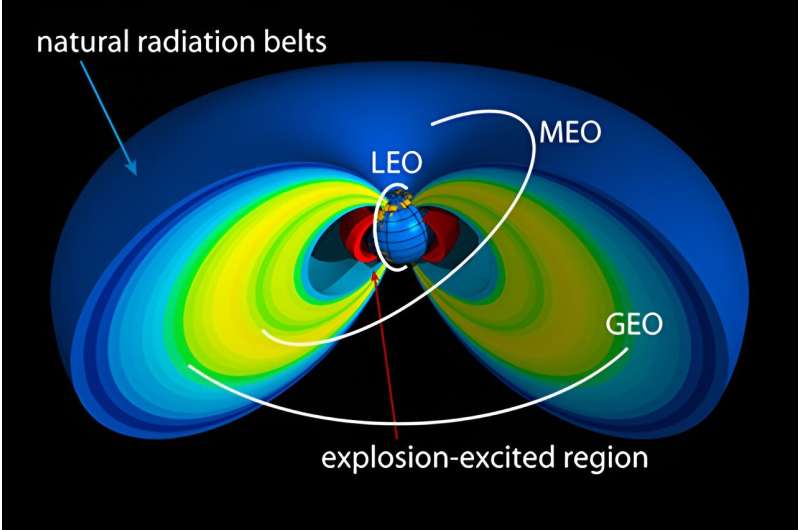This article has been reviewed according to Science X's editorial process and policies. Editors have highlighted the following attributes while ensuring the content's credibility:
fact-checked
trusted source
proofread
Fixing space-physics mistake enhances satellite safety

Correcting 50-year-old errors in the math used to understand how electromagnetic waves scatter electrons trapped in Earth's magnetic fields will lead to better protection for technology in space.
"The discovery of these errors will help scientists improve their models of artificial radiation belts produced by high-altitude nuclear explosions and how an event like that would impact our space technology," said Greg Cunningham, a space scientist at Los Alamos National Laboratory. "This allows us to make better predictions of what that threat could be and the efficacy of radiation belt remediation strategies."
Heliophysics models are important tools researchers use to understand phenomena around the Earth, such as how electrons can become trapped in the near-Earth space environment and damage electronics on space assets, or how Earth's magnetic field shields us from both cosmic rays and particles in solar wind.
Cunningham is particularly interested in studying the Van Allen radiation belts because they provide a natural analog to artificial radiation belts that could occur after a high-altitude nuclear explosion.
"In an artificial radiation belt, electrons produced by a nuclear explosion can become trapped in the Earth's magnetic field in the same way as naturally occurring radiation belts," Cunningham said. "When these electrons become trapped in the inner radiation belt for many years, they could destroy existing satellites and make it impossible to deploy new ones."
Researchers in the heliophysics community have long been using quasilinear theory, which explains plasma turbulence, to understand particle scattering. Simulation models based on the theory play an important role in understanding how to protect space technology.
But through his research, Cunningham tried to rederive papers based on quasilinear theory and discovered errors in the longstanding equation used across the space-physics community.
"In certain types of models, this error can really impact the answer you get; you can get orders of magnitude difference in the scattering rates," Cunningham said. "Now, researchers who have written papers over the last 20 or 30 years can go back and take a look and see whether or not this affects their work."
"The error went undiscovered for so long simply because the research community didn't think the original authors, who are highly cited researchers in the field, could have made this mistake," he added.
Cunningham's paper detailing the errors was recently published in Journal of Geophysical Research: Space Physics.
More information: Gregory S. Cunningham, Resolution of a Few Problems in the Application of Quasilinear Theory to Calculating Diffusion Coefficients in Heliophysics, Journal of Geophysical Research: Space Physics (2023). DOI: 10.1029/2023JA031703
Provided by Los Alamos National Laboratory





















